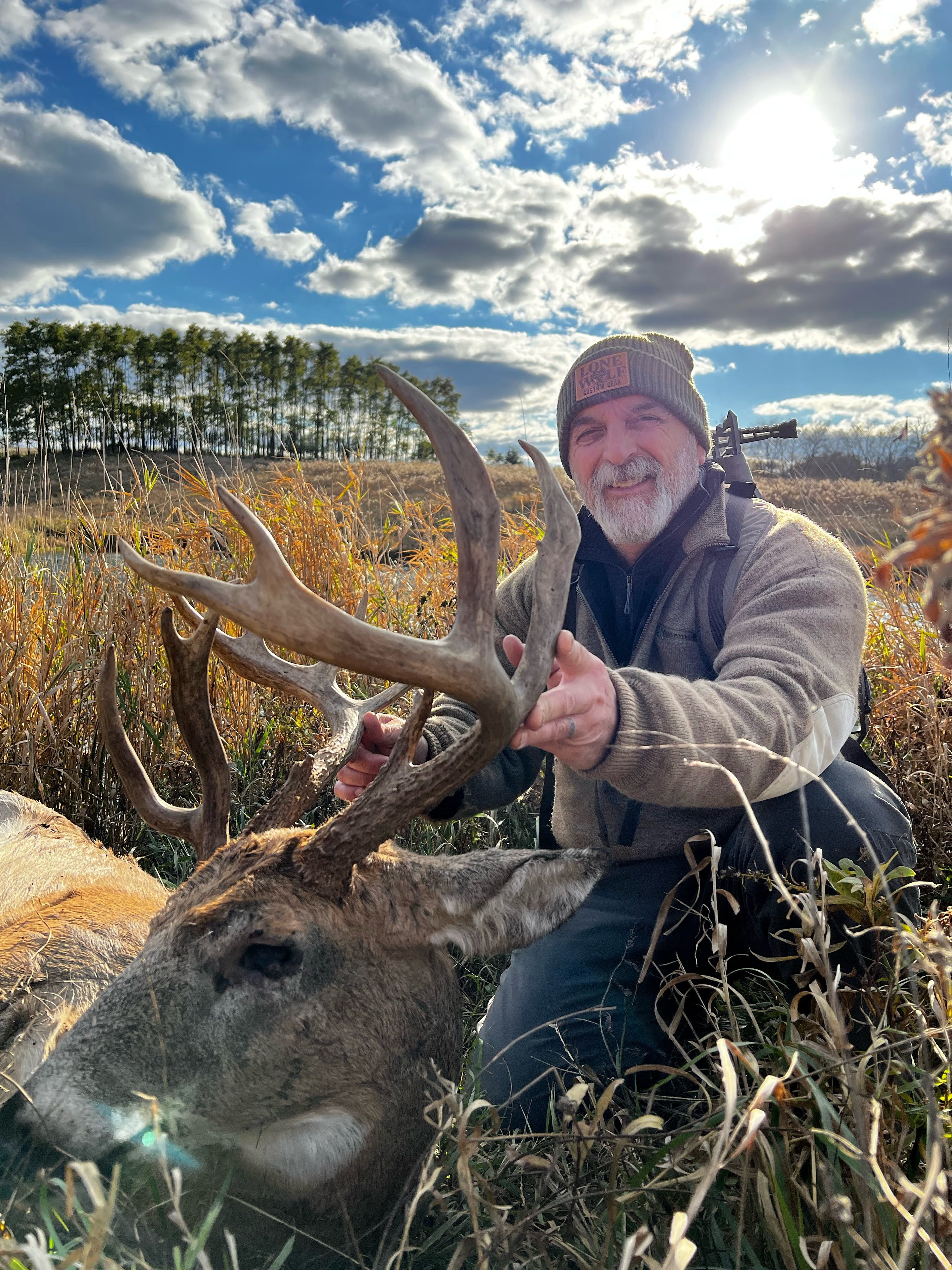Have you ever been busted by a buck while up in your treestand? Most of you can relate, because there are so many variables when a cagey mature deer is in point-blank range. And sometimes it's simply a numbers game. The more mature buck encounters you have, the more likely that even the stealthiest, wind-conscious hunters will be picked off up in their perches. It’s part of the challenge of hunting, but have you ever considered that you were busted because you were too high in the tree, rather than too low?
A recent discussion with one of the best whitetail hunters I know has me rethinking some of my stand setups, and might get you to thinking as well. Andrae D’Acquisto, 64, is the owner of Lone Wolf Custom Gear, which offers premium treestand and saddle gear, along with accessories that include lightweight, compact camera arms and broadheads.
Andrae, who currently resides in Iowa, has bow-bagged more than 50 recordbook-class bucks. He’ll be looking for more this fall in Iowa, Illinois and Ohio, and on many of those hunts he’ll be sitting lower in the tree than he did in the early stages of his hunting career. Why? Over the second half of his hunting career, he’s discovered something as he pursues top-end bucks — deer that score 150 to 170 inches or more.
“I don’t know what it is, but I’ve found that there is a zone, somewhere in that 11- to 12-foot range, where you can become almost invisible to those bucks. If you could see the caliber of some of the bucks that come through and look right through me at that height, you would hardly believe it.”
Actually, you can see some of those encounters, because D’Acquisto self-films most all of his hunts for his popular Whitetail Addictions Youtube channel. And as you might guess, there is something more to Andrae’s approach than simply climbing to 12 feet. D’Acquisto is a master at sitting absolutely still on stand and is religious about wearing a face-covering headnet. He also chooses his stand trees carefully, as they relate to mature buck trails that he takes great pains to positively identify.
“Wherever you think that deer is going, his concentration is on that trail,” Andrae said. “And if it bends to the right, you don't want to be hanging from a tree in that right curve, you want to be out to the left, or perpendicular to the trail.”
D’Acquisto says the ability of mature, top-end bucks to catch movement, or spot things out of place, is beyond scary. That’s why, he says, those older, wiser deer will enter a woodlot and regularly stop and stand statue-still for up to a half hour while scanning the area. They’re looking for both movement and sky-lined hunters sitting 20 feet up or more. In many cases, hunters sitting higher can actually be more visible to cagey mature buck eyes.
“I don't know how they get that ability while living only four years, but they get there quickly. I think it might be inherited from evolution; maybe it’s ingrained in their DNA.”




.png)